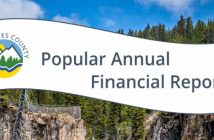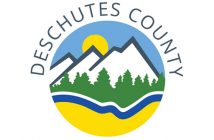Planning and running an event can be totally chaotic. With so many moving parts to get in place, it’s no wonder event managers often feel overwhelmed trying to get everything to come together. From finding the right venue and getting vendors lined up, to marketing the event and managing attendees, putting on an event just keeps getting more complicated. But the good news is there are now some amazing tech tools that can bring a sense of order to the madness!
Tech + Events = Match Made in Heaven
Technology has become such a big part of how all businesses operate these days. For event pros, a ton of new software, apps, and digital platforms are revolutionizing how events are planned, promoted and produced. While the goals of creating a memorable event stay the same, the tools and processes used to make the magic happen are changing fast.
Exciting new event management software brings all those super critical details – like schedules, guest lists, vendor contacts, staffing, budgets and more – together in one place. This means no more tracking everything on messy spreadsheets or endless email chains! Dashboard views give planners an instant snapshot of where the event is at. And collaboration features make it easy for everyone involved with the event to communicate in real time.
On the marketing side, digital channels and automated tools provide awesome insights to help optimize event promotion. Detailed data on website traffic, email open rates, and social engagement show what audiences are responding to. This allows campaigns to be fine-tuned for maximum impact. Automated email sequences handle sending scheduled messaging to potential attendees, freeing up time for event marketers.
When all the admin tasks and promotion are powered by the right tech tools, event managers are freed up to fully put their creativity into designing an unforgettable experience for attendees.
Real Events, Real Results
Events across all industries in the US continue to leverage tech in innovative ways to create next level experiences. Here are some great examples of events using digital platforms and tools to take their events to the next level.
In 2021 when in-person events were on hold, software company Adobe took their huge annual Adobe Summit event completely virtual for the first time ever. Their event platform hosted over 150,000 attendees who could explore the virtual venue, watch keynotes and sessions, and network with others. Attendees loved the creative approach that brought typical in-person elements like a virtual reception and live chat lounges online.
The iconic Coachella music festival went hybrid in 2022 – keeping the live in-person event but also live streaming select performances to a global audience. The live stream allowed the festival vibe to reach new demographics of fans at home. People could feel the energy without the cost and hassle of travel and tickets.
Both Adobe Summit and Coachella tapped into virtual event options to expand access and appeal. While nothing fully replaces an in-person experience, adding virtual elements gave these events flexibility to adapt in uncertain times.
Behind the scenes, these events relied on extensive preparation and planning powered by digital tools to execute flawlessly. As one example, templates and digital tools were key to orchestrating the precise timing of event activities down to the minute. We and Goliath’s run of show template on Google Sheets offers event planners a blueprint to seamlessly coordinate the flow of an event’s moving parts.
Event Templates – Boring but Crucial
While creative vision is key for designing an event, careful planning and organization is what actually brings the vision to reality. This is where digital templates and tools really shine – they provide schedules and structures to wrangle all those nitty gritty event details into a cohesive plan.
Think about everything that makes up an event agenda – speaker sessions, meal services, sponsor booths, entertainment, and more. You need detailed documents that outline schedules, layouts, vendor contacts, etc. to pull off a smooth event. Digital templates allow planners to easily plug in details and shift things around as plans change. Since they are accessible from any device, event staff always have the latest information at their fingertips.
When it comes to orchestrating the actual event flow itself, comprehensive run of show documents are vital. These outline everything happening minute-by-minute and who is responsible. Rather than relying on post-it notes and scrawls, digital run of show templates give planners a centralized document that reflects the most up-to-date event plan. With the template schedule handy, event staff can execute seamlessly as they know what is coming next.
Marketing Magic: Reach and Engage Attendees
While solid event execution handles the on-site details, digital marketing tools empower strategic promotion to get the right attendees there in the first place. Event marketers can optimize outreach to drive conversions and fill seats.
Email remarketing campaigns are an effective way to stay top of mind among potential attendees. Based on website visits and past email engagement, these campaigns automatically send customized messaging to warm up cold leads and re-engage past event participants. As the event nears, email remarketing helps drive final ticket sales.
Post-event, the marketing outreach continues. Using attendee data, post-event email campaigns deliver personalized recaps, photos/videos, and invites to upcoming events. Maintaining engagement after an initial event is key to building an invested community and brand advocates.
The big takeaway is that technology provides event marketers with better data and insights about their audiences. With this intel, event promotion can be tailored for relevance. Hyper-targeted messaging keeps audiences tuned in through every phase.
What’s Next for Event Tech
We’re already seeing how artificial intelligence and machine learning will influence future event promotion. As algorithms analyze data points like demographics, past behavior, and content engagement, marketing messages continually optimize for relevance. Email campaigns, web content, and social ads will become more personalized and effective at driving conversions.
For the event experience itself, mixed reality and augmented reality open new possibilities. As seen at recent tech conferences, augmented reality can overlay digital elements onto live events. Attendees can access enhanced content through a smartphone, from 3D product displays to interactive maps. Blending virtual and real amplifies engagement.
And advances in live streaming and hybrid events will continue as platforms and bandwidth improve. Virtual attendees will feel more immersed in streamed conferences and performances. We’re moving beyond static video to more interactive digital environments. Options for virtual attendees to network, ask questions, and engage will keep improving.
Wrapping Up
Event management remains an exciting yet demanding field. As people continue to crave shared IRL experiences and connections, the pressure is on for event pros to exceed expectations. Thankfully, embracing modern tech tools provides a path to taming event chaos. The right platforms and software can upgrade event execution from confusion to clarity. Tech will augment (not replace!) human creativity in crafting events that truly engage communities.



